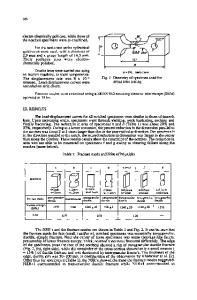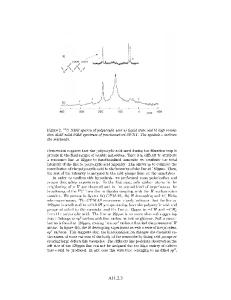NMR study of Ni 3 Al with B and C additions
- PDF / 456,297 Bytes
- 6 Pages / 576 x 791 pts Page_size
- 97 Downloads / 331 Views
NMR study has been carried out on Ni3Al with B and C additions. The 27A1-, n B - , and 13C-spectra have been measured as a function of temperature for determining their Knight shifts. The Curie temperature and Knight shift at low temperature in Ni3Al with B and C additions decrease in the order of atomic number of additions, but the Knight shifts around room temperature are nearly the same as that of pure Ni 3 Al. It is suggested that the addition of B and C affects the electronic structure of Ni, and that B atoms and possibly C atoms occupy the octahedrally symmetric sites neighboring all the Ni atoms.
I. INTRODUCTION The intermetallic compound Ni3Al has the L l 2 crystal structure and can accommodate a large number of, and also considerable amounts of, ternary substitutional additions in solution.1'2 The boron (B) and carbon (C) atoms in the Ni3Al alloy as ternary addition are considered to occupy the interstitial sites in LI 2 crystal structure because of their small ionic radii. These alloys have attracted much attention because of their unusually excellent mechanical properties. For example, addition of a small amount of B and C atoms into the Ni3Al alloy produced high strength at a wide range of temperatures,3'4 and also addition of a small amount of B atoms resulted in the considerably large ductility at ambient temperatures through suppressing the grain boundary fracture.5'6 For understanding the mechanism of the peculiar mechanical properties, it is necessary to elucidate the site occupation of these ternary interstitial atoms and a bonding character, or the electronic structure, associated with these atoms. Concerning the site occupancy of B atoms in Ni3Al alloys and Ni3Al-based alloys, the indirect method by the measurement of the lattice properties (i.e., x-ray diffraction measurement)3'7 and the direct method by the channeling8'9 have been reported. For the former method, Baker et al. reported that B atoms occupy the octahedral site surrounded by four Ni atoms and two Al atoms (i.e., site II), 3 while Masahashi et al. investigated that B atoms occupy the octahedral site surrounded by six Ni atoms (i.e., site I).7 For the latter method, Bohn et al. reported that B atoms occupy the octahedral sites, but were not identified whether their sites are surrounded by six Ni atoms (i.e., site I) or by four Ni atoms and two Al atoms (i.e., site II),8 whereas, Tanaka et al. observed, based on the ion-channeling method, that B atoms exclusively occupy the octahedral positions surrounded by six Ni atoms (i.e., site I).9 Thus, there are still contradictory data for the site occupation of B atoms in Ni3Al. Also, J. Mater. Res., Vol. 8, No. 6, Jun 1993 http://journals.cambridge.org
Downloaded: 17 Mar 2015
there have been no experimental observations concerning the electronic environment associated with B atoms that are postulated to play an important role on various properties, particularly the mechanical property of Ni3Al alloys. NMR spectroscopy is a very suitable tool to investigate the local microscopic properti
Data Loading...











